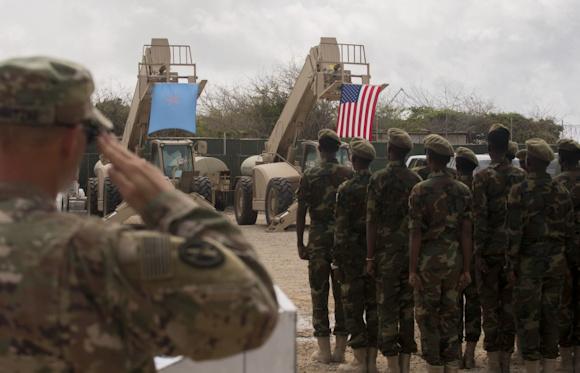During the Obama administration - and in continuation with the previous one - the American forces carried out several attacks against jihadist formations belonging to Al-Shabaab, affiliated to al-Qaida. Thanks to the use of MQ-9 armed drones Reaper, led by special forces teams, several jihadist leaders were eliminated, including leader Ahmed Abdi Godame, killed in September 2014.
Upon taking office in the White House, President Trump stepped up this effort, leaving more leeway for forces on the ground. During the first year of his mandate, the number of airstrikes carried out against jihadists more than doubled (35 sorties compared to 15 in 2016). This trend was subsequently accentuated. In 2019, 51 attacks were carried out against the Somali jihadist movement.
Between January and April 2020, the frequency increased further, especially after a jihadist attack on a base that housed USAF soldiers.
In the same period, the special forces Americans have begun to train their Somali counterparts in the brigade Danab. To this end (and for other missions), the Pentagon has deployed between 500 and 700 troops in the African country. The CIA was also very active, with its SOGs (Special Operations Group), as evidenced by the death of one of his agents last November in circumstances not fully understood.

The considerable effort made by Washington is justified by the fact that the State Department has always considered the militias of Al-Shabaab one of the most dangerous threats in Africa.
However, the task is not easy, the results have not always been positive. Regarding the training of Somali special forces, a US military official had confessed to CNN in April 2019 that it would take at least another seven years of effort to equip the brigade. Danab of five battalions (3.000 soldiers), in order to effectively counter the jihadist militiamen.
According to the US leaders of AFRICOM, the Somali Army must progress, intensify its efforts and take on greater responsibility, in order to guarantee the security of the country.
This is because the jihadist militiamen of Al-Shabaab show amazing resilience. Despite the targeted killings of their leaders and the defeats suffered against the United Nations AMISOM (African Union Mission in Somalia), these jihadists continue to pose a significant threat, with regular attacks on the capital Mogadishu (in most cases it is of attacks carried out with improvised explosive devices, IED).
In addition, there is an increase in suicide attacks, which target government personalities and commanders of the security forces, in order to weaken the democratic transition in the country.
 However, even if he leaves the White House on January 20, President Trump has decided to review the Somali strategy. Thus, after the (partial) disengagement of US troops from northeastern Syria and the announcements regarding Afghanistan and Iraq (where no more than 2.500 soldiers will remain in each country by January 15), the US administration has ordered the withdrawal of most of the soldiers from Somalia within the next three weeks.
However, even if he leaves the White House on January 20, President Trump has decided to review the Somali strategy. Thus, after the (partial) disengagement of US troops from northeastern Syria and the announcements regarding Afghanistan and Iraq (where no more than 2.500 soldiers will remain in each country by January 15), the US administration has ordered the withdrawal of most of the soldiers from Somalia within the next three weeks.
“Some of the forces could be redeployed outside of East Africa. However, the rest of the troops will be withdrawn from Somalia and relocated to neighboring countries, in order to allow cross-border operations by the United States and allied forces, to maintain pressure on jihadist organizations ", the Pentagon announced on December 4.
Obviously, operations in Somalia will mainly be carried out from Camp Lemonnier in Djibouti.
Washington's statements caused some concern for the French forces of the mission Barkhane, however, the Pentagon has made it clear that the Americans will not withdraw from Africa.
Meanwhile, the new American administration redefines its strategy in East Africa, the jihadist groups affiliated to al-Qaeda they rage in Mozambique, attacking villages and feeding on the trafficking of precious stones and human organs. There have been over 2.000 victims and nearly half a million refugees since the attacks began.
Photo: US Department of Defense / Opération Barkhane












